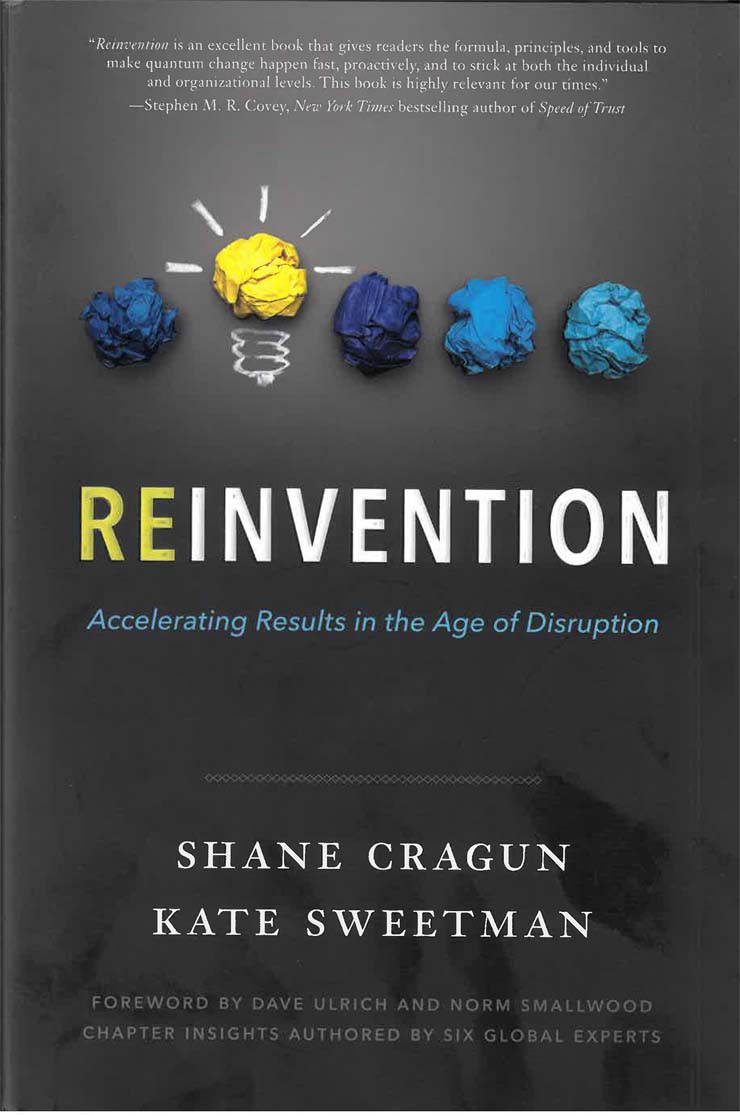By Morf Morford
Tacoma Daily Index
Think the election of Donald Trump was an anomaly? Think the demise of familiar brands like Radio Shack, Blockbuster, Blackberry and Kodak was an accident? Think the stalling of Microsoft and even Sony was inevitable? How about the retreat, if not collapse, of Sears, Penney’s and K-Mart? How about the ethically fraught implosion of one – if not both – of America’s major political parties? And we are just beginning to hear about the repercussions of Brexit.
If any of these changes took you by surprise, they shouldn’t have – at least according to the authors of “Reinvention – Accelerating Results in the Age of Disruption” (Shane Cragun and Kate Sweetman). http://www.ageofdisruption.com/
If you pay attention to our political, cultural or business scene, you know one thing for certain – nothing is as it was.
The scale, scope and pace of disruption has never been so great.
Even if you knew this, and in a sense maybe we all did, that still doesn’t keep us from feeling overwhelmed, discouraged and helpless.
Cragun and Sweetman have another answer – we can ride these crazy and seemingly unpredictable waves – and maybe even prosper in the process.
But we can only do so if we pay attention, listen and respond; and we can. And it does not need to be difficult or expensive – in fact Cragun and Sweetman would emphasize that doing nothing – or pretending such a response is not necessary – is far more difficult and expensive – and perhaps even economically suicidal.
The authors give us strategies, simple, but not necessarily easy, that can help us, as individuals or as leaders of organizations, weave our way through storms and crises that besiege and sink those around us.
The first principle is so simple, too many of us just forget to do it; listen and pay attention. Have outside ‘look-outs’ keeping an eye on your mission, your product, your customers and your reputation.
Another principle is leadership. As the authors put it “without leadership, everything else is just interesting” (pg 61). And, as everyone who has had a terrible boss knows all too well, “interesting” will generate good stories, but can be a rough and chaotic road to disaster.
On the other hand, a key question, the authors suggest, of good leadership is “To what degree do people willingly follow you?” Mahatma Gandhi is used as an example of someone with no official “positional” authority yet with great moral authority.
In contrast, “Powerful leaders with no moral authority gain followers through lies, threats, bribes and promises. But their true influence is generally short-term. The dictator is always overthrown.” (pg 62)
People can be manipulated and deceived, but not for long.
True reinvention comes from what Cragun and Sweetman call the “Change quotient” – dissatisfaction, focus, alignment and execution.
No company will fail if its customers are satisfied, and no business will succeed if the employees are dissatisfied and disrespected. No goal is achieved without a clear and consistent focus and the alignment of resources and personnel is essential to progress.
Execution merely means doing what needs to be done.
And all this, in most cases, is only worth doing if the possibilities are greater than the cost of change.
There are two principles from this book that resonate across every business, social or personal issue; it is far better to be the disrupter (Uber or Amazon, for example) than the disrupted (Radio Shack, Macy’s, Sears and too many more) and every organization is uniquely designed to achieve the results that it gets.
For better or worse, we in our business and personal lives, create the conditions for the results we then must live with.
This book could easily change the direction of your life and business.









